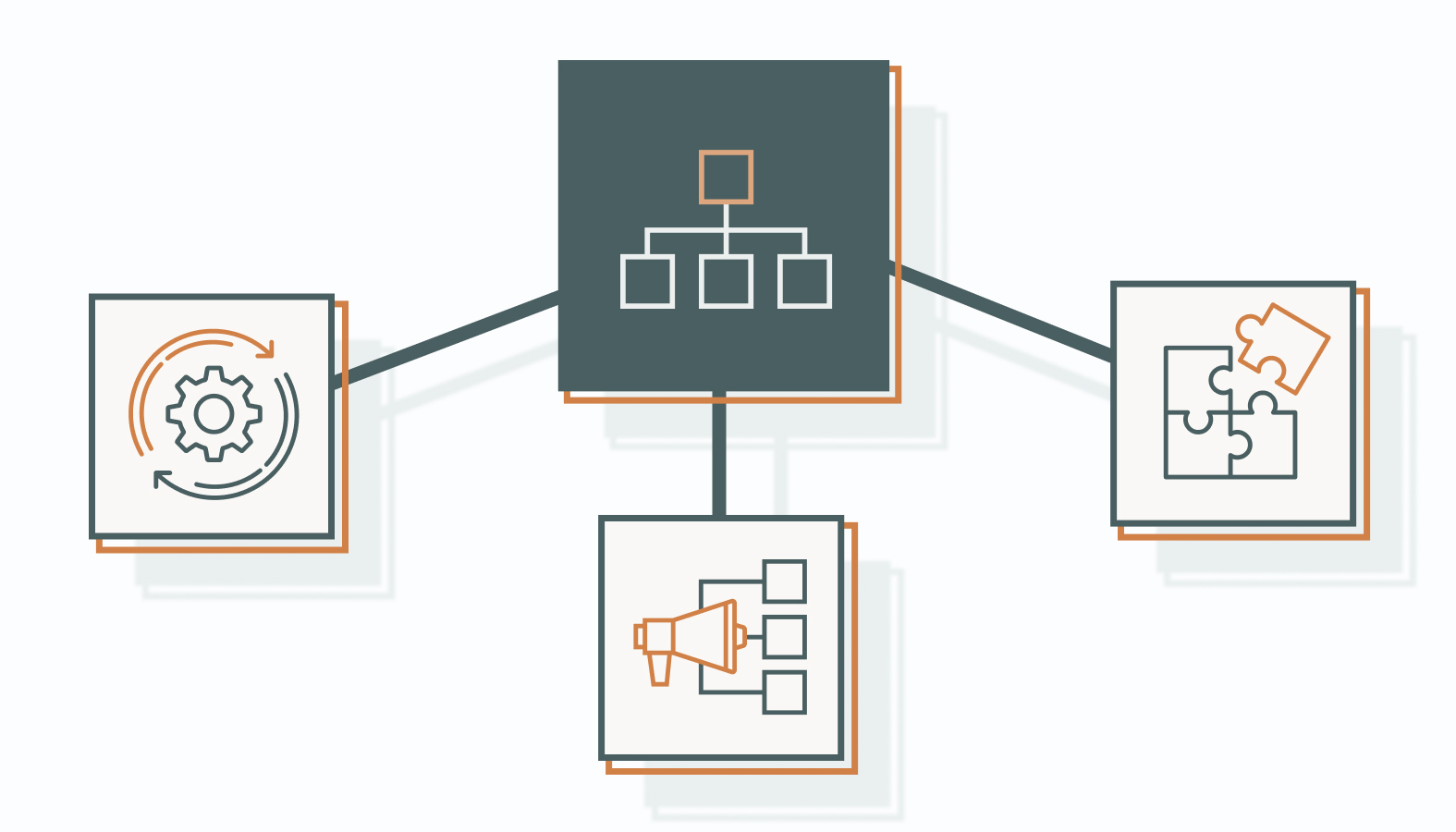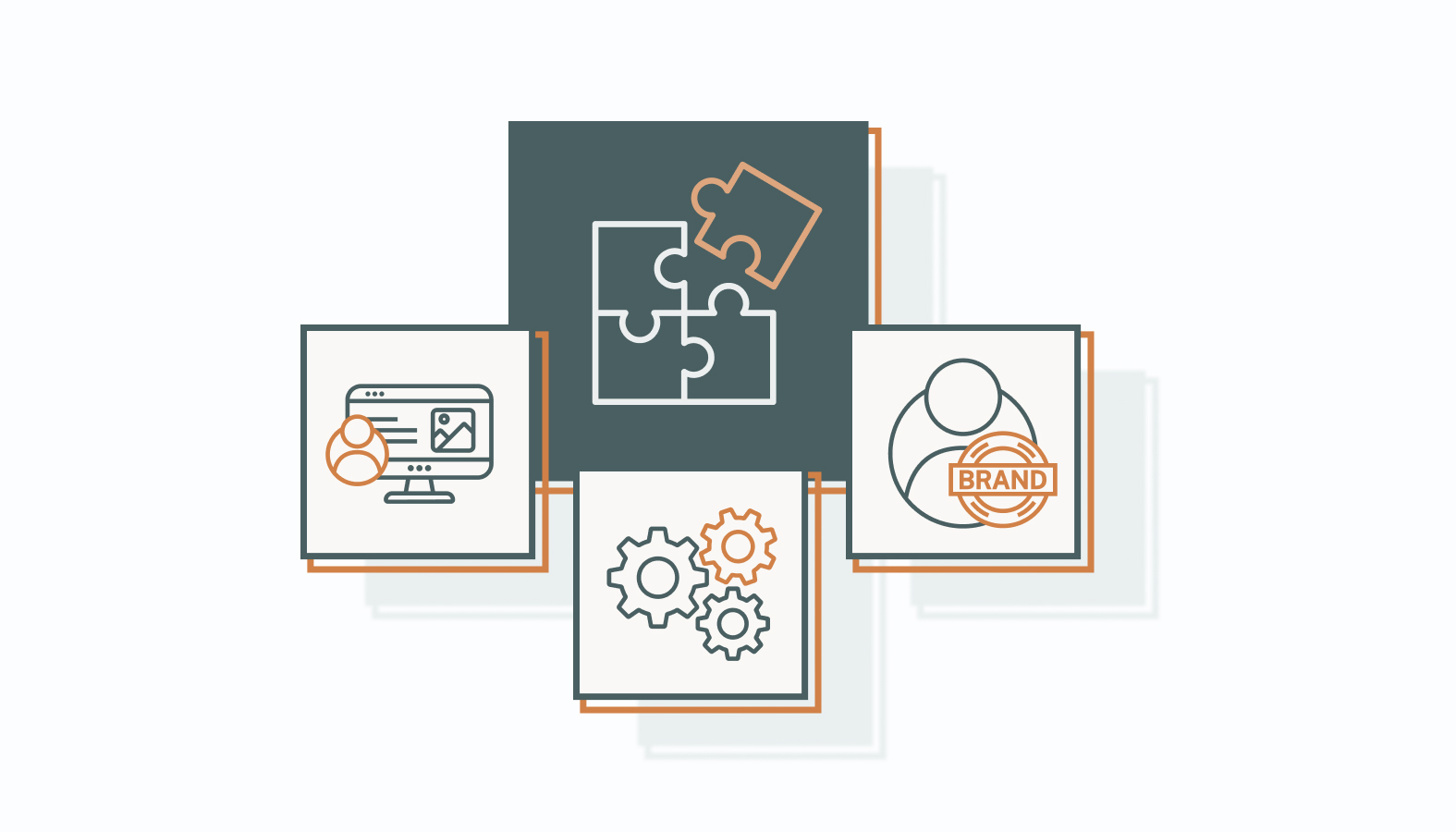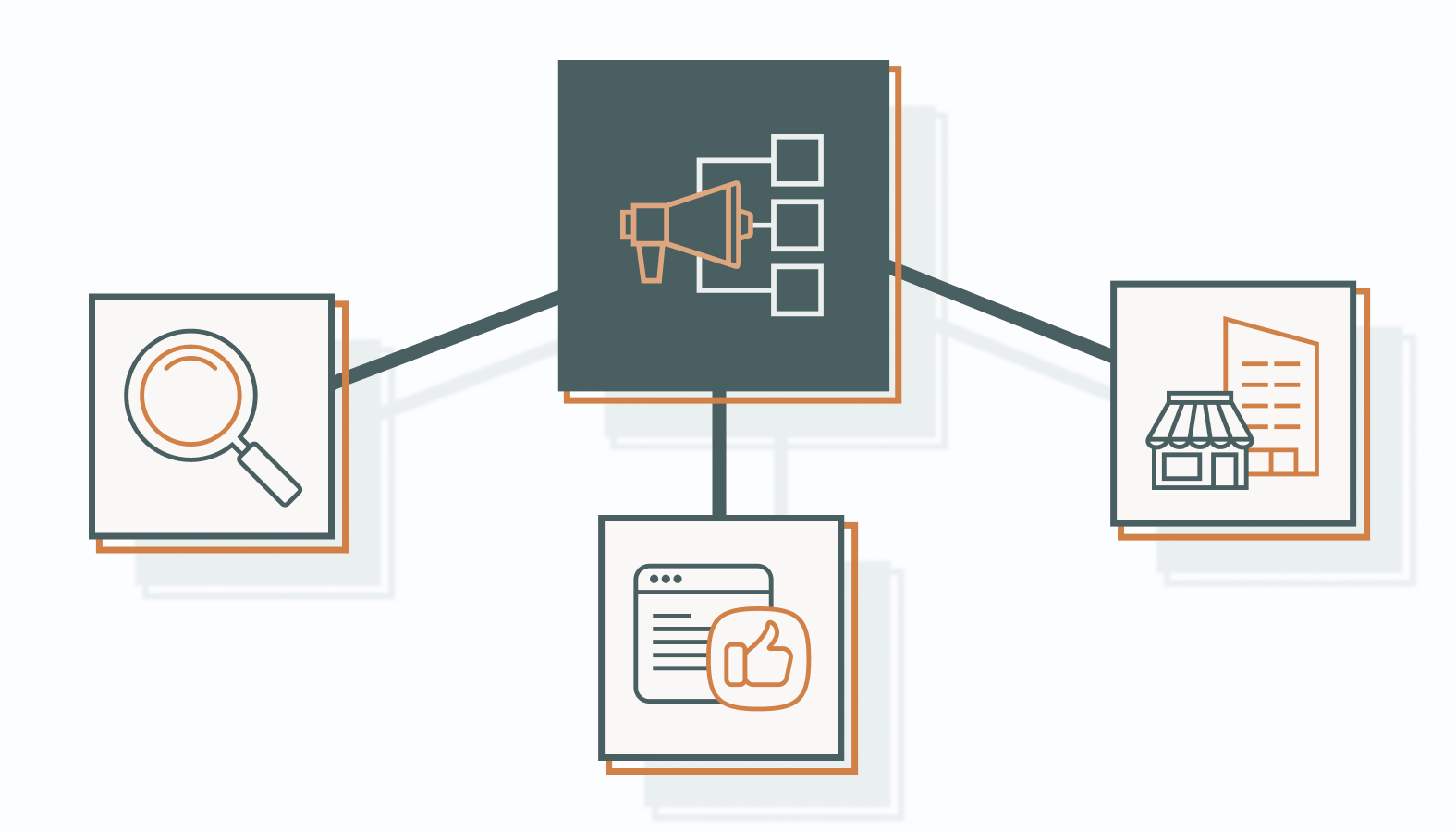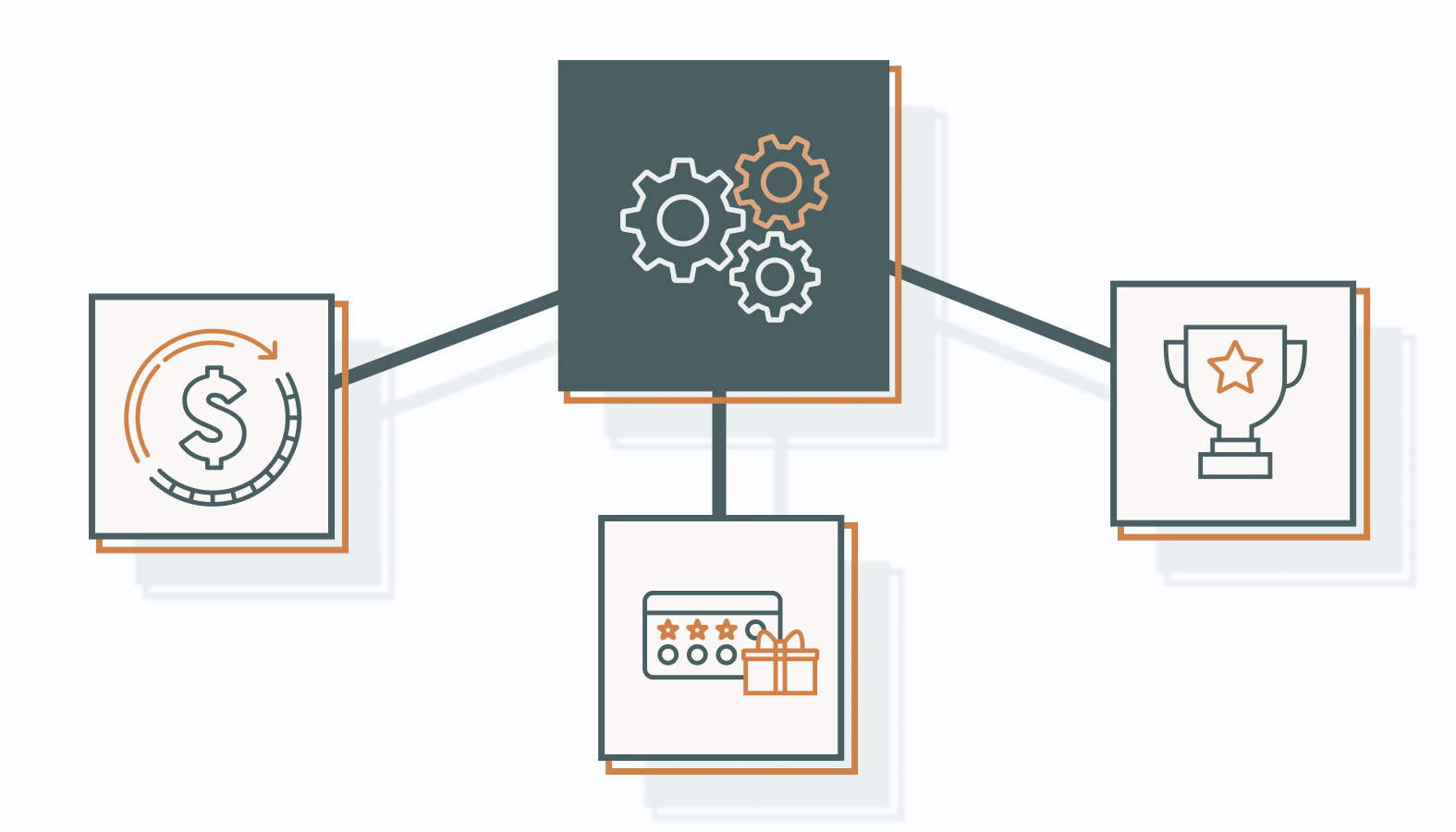Smooth Customer Journeys and Increased Revenue
Shoppers don’t think in channels anymore – they think in moments. One minute they’re scrolling your app, the next they’re standing in your store expecting everything to connect without a hitch. That’s the challenge and the opportunity of an omnichannel retailing strategy: bringing every touchpoint together so the brand feels consistent, personal, and easy to buy from.
Yes, it’s complex. Coordinating tech, inventory, and messaging across platforms is always a challenge, but businesses that figure it out are leading the way. A well-built omnichannel strategy doesn’t add layers of complication. It removes friction, deepens loyalty, and drives measurable growth.
This guide breaks down how to make that happen: what omnichannel really means, why it matters, and how to build a strategy that fits your business and your customers.
Excelling in Omnichannel Retailing
Retail has never moved faster. Shoppers are more connected, more informed, and less patient than ever, and they expect brands to meet them wherever they are. Excelling in omnichannel retailing isn’t about being everywhere; it’s about making everywhere feel like one experience.
Exploring Retail Models: Single, Multi, and Omnichannel
Retail strategy has gone through three major eras.
Single-channel retailing started it all: one store, one website, one way to buy. Simple, but limited.
- The upside? Full control over brand experience and operations.
- The downside? Customers have only one path to purchase, limiting sales potential and reach. In a world where shoppers move between screens faster than you can say “add to cart,” that’s a deal-breaker.
Multichannel retailing came next, and it looked like progress. Suddenly, you could sell in-store, online, through social, or even via third-party platforms.
- The big win here was visibility. Your brand could finally meet customers where they spend their time.
- But here’s the catch: each channel acted like its own little kingdom. Data didn’t talk, promotions didn’t sync, and customers had to reintroduce themselves every time they switched platforms. It worked, but it wasn’t elegant.
Think of it as having multiple engines running at once: powerful, but burning fuel inefficiently.
Omnichannel retailing fixes what multichannel broke. It connects every system and experience so the customer doesn’t see “channels” at all – just one brand that knows them well. They can start a cart on mobile, finish on desktop, and pick up their order curbside without a single hiccup.
- The pros are obvious: more convenience, more conversions, and more loyalty.
- The only real con? Integration takes planning, tech alignment, and discipline. But once it’s in place, you’ve built something far stronger than a sales network. You’ve built a unified ecosystem that feels effortless to the customer and incredibly efficient to you.
The Significance of Omnichannel Retailing
Omnichannel retailing isn’t a marketing trend; it’s how today’s consumers shop. They expect brands to remember their preferences, sync their data, and make transitions between channels feel effortless.
Think about Starbucks’ loyalty program that works the same way online and in-store, or Amazon’s fluid experience from website to physical locations. These aren’t flashy extras; they’re what customers now expect as standard.
Businesses that adopt this mindset gain more than convenience. They gain trust, repeat business, and a stronger brand presence across every platform that matters.
Building Blocks of a Successful Omnichannel Strategy
An effective omnichannel retailing strategy doesn’t happen by accident. It’s engineered through precise alignment between technology, data, and customer intent. When every component works in sync, you don’t just improve customer satisfaction; you build a system that scales effortlessly and fuels measurable growth.
Creating a Cohesive Customer Experience
Consistency is the currency of trust. Customers expect your brand to know them (whether they’re scrolling your mobile site, chatting with support, or walking into your store). The goal isn’t just convenience; it’s creating a connected experience that feels seamless at every turn.
To make that happen, start with:
- Unified Customer Profiles. Bring all customer data under one roof. Every click, visit, and purchase adds context to their experience, enabling personalization that feels effortless and authentic.
- Consistent Communication. Speak with one voice across every touchpoint. From your website to your social feed to in-store signage, your tone and messaging should always feel unmistakably “you.”
- Cross-Channel Continuity. Let customers move freely between channels without losing progress or context. They should be able to start on social, continue on desktop, and finish in-store friction-free.
Utilizing Integrated Technology
Omnichannel retail runs on integration. Without connected systems, even the best strategy stalls.
Your tech stack is the backbone of the customer experience – it’s what keeps data flowing, inventory accurate, and messaging consistent. Include:
- Customer Relationship Management (CRM) Systems track every interaction and feed insights into smarter, data-driven decisions.
- Omnichannel Retail Platforms like Shopify Plus or Salesforce Commerce Cloud centralize sales, inventory, and engagement, keeping every team on the same page.
- Cloud-Based Solutions ensure real-time synchronization across all channels, so customers always see accurate pricing, stock, and availability.
When technology is aligned, operations run more smoothly, decisions become sharper, and customers feel the difference instantly.
Personalization and Consistent Brand Messaging
If data is the fuel, personalization is the ignition. Shoppers expect experiences that adapt to them, not generic campaigns that miss the mark.
- Data-driven insights help tailor recommendations, promotions, and interactions around real behavior.
- Dynamic content ensures every digital touchpoint feels relevant and timely, adjusting in real time based on customer actions.
And all of this means nothing without consistent brand messaging, the connective tissue that turns multiple channels into a single, recognizable presence. When your message, tone, and design align everywhere, your brand earns familiarity, trust, and loyalty.
Bottom line: A true omnichannel strategy isn’t simply about connecting your channels. It’s how you orchestrate them. It’s not about being everywhere; it’s about making everywhere feel like one experience. When executed well, it transforms complexity into clarity and turns every interaction into momentum for your business.
How to Design an Effective Omnichannel Retail Strategy
Designing a powerful omnichannel retail strategy isn’t about throwing tech at the problem – it’s about precision. The right framework connects data, insight, and experience so that every customer touchpoint feels intentional. When done right, it doesn’t just meet expectations; it quietly raises the bar for how customers expect to shop.
In-Depth Research and Customer Insights
Every smart strategy starts with intelligence. Understanding who your customers are, what drives their decisions, and how they move between channels is what turns “omnichannel” from a buzzword into a blueprint.
Here’s how to capture that intel with purpose:
- Surveys and Feedback. Regular, structured feedback gives you the pulse of customer sentiment and highlights where friction lies.
- Data Analytics Tools. Use advanced analytics to uncover behavioral patterns across channels. Look for the micro-moments where customers hesitate or convert – those are gold.
- Social Listening. Pay attention to what customers say when they’re not talking to you directly. Social insights reveal trends, frustrations, and emerging needs before they show up in your sales reports.
The goal: actionable understanding. When you know your customer’s mindset, you can shape experiences that anticipate, not react.
Making Every Interaction a Purchase Opportunity
Every click, swipe, or visit is a moment of truth. Optimizing those micro-interactions turns casual engagement into meaningful momentum.
- Personalized Recommendations. Use real-time data to guide discovery, not just react to it. Smart product suggestions feel like intuition, not intrusion.
- Streamlined Checkout. Friction kills conversions. Keep payment paths clean, fast, and trustworthy. A one-click option can do more for revenue than an entire ad campaign.
- Engaging Content. Replace generic marketing with content that informs, inspires, and sells. When your content helps customers make smarter choices, they’ll keep coming back for more.
Great brands don’t wait for customers to decide. They make every interaction an easy “yes.”
Bridging Online and In-Store Experiences
The real magic of omnichannel lies in connection. When digital and physical experiences feel like extensions of each other, customers stop noticing the handoff, and that’s the point.
- Unified Inventory Systems. Give customers real-time visibility into what’s available and where. Nothing builds trust faster than accuracy.
- Click-and-Collect. The perfect fusion of digital convenience and in-store immediacy. Let customers order online, pick up in person, and feel like they’ve hacked the system.
- Consistent Branding and Messaging. Whether they’re opening an app or walking past a storefront, your tone, visuals, and promise should never waver. Consistency isn’t about repetition – it’s about reliability.
A seamless bridge between channels doesn’t just improve experience – it amplifies loyalty and lifetime value.
Advanced Omnichannel Strategies to Master
The fundamentals get you in the game. These next moves help you win it.
1) Optimize Cross-Channel Fulfillment and Inventory
Real omnichannel success depends on logistics that move as fast as your customers. Inventory systems should think in real time (not end-of-day updates).
- Integrated Inventory Systems: Centralize your operations so every channel reflects the same data. When a product sells out in-store, your site should know instantly.
- Demand Forecasting: Let predictive analytics do the heavy lifting. Anticipate trends before they happen and keep stock levels tuned to reality.
- Flexible Fulfillment: Offer multiple delivery and pickup options that meet customers on their terms – ship to home, local pickup, or hybrid models that blend both.
2) Boost Customer Engagement through Technology
Technology can be a relationship builder. The right tools let you scale personalization without losing the human touch.
- CRM Systems: Use CRMs as command centers for customer insight. Every interaction adds context to future engagement.
- Chatbots and AI Assistants: Done right, automation doesn’t feel robotic. It delivers instant, intelligent support that actually helps customers move forward.
- Interactive Content: Use AR, VR, and immersive experiences to make online browsing feel tactile and memorable. Let customers visualize, customize, and connect before they buy.
3) Streamline Payment and Checkout Processes
Checkout is the finish line, but it’s also where most races are lost. Every second of hesitation costs conversions.
- Multiple Payment Options. Cover every base: cards, wallets, BNPL services. The more flexibility you offer, the fewer carts you’ll lose.
- One-Click Checkout. Simplicity drives sales. Minimize form fields, remove distractions, and make the “buy” moment effortless.
- Secure Payment Gateways. Security and speed go hand in hand. A customer who trusts your checkout once will trust your brand for good.
Omnichannel excellence doesn’t come from adding more channels. It comes from connecting the right ones with precision, personality, and purpose. When your strategy runs this tight, customers stop noticing how your systems work. They just notice that they do.
Advantages of an Omnichannel Approach
Adopting an omnichannel retailing strategy is about setting the pace. Done right, it builds revenue, loyalty, and brand resilience in ways that single- or multichannel models can’t.
Boosting Sales and Revenue
Omnichannel retailing turns convenience into conversion power. When every platform works together (app, website, store, and social), customers stop thinking about where to buy and simply buy.
Expanded Reach, Smarter Engagement: Each connected channel adds another path to purchase, but the real magic is how they communicate. Data flows between systems, helping you target precisely, not blindly. That’s how brands move from noise to results.
Higher Conversion Rates Through Continuity: A customer who starts a cart on mobile and checks out on desktop shouldn’t feel a single interruption. The smoother the handoff, the higher the conversion and the deeper the trust.
Real-World Power Plays
- Nike: Their ecosystem syncs app, website, and store so well that it feels like one conversation. The result? Personalization that sells and keeps selling.
- Sephora: Seamless transitions between online browsing and in-store testing, all wrapped in one loyalty program. Every touchpoint feels personal, not programmed.
Enhancing Customer Retention and Loyalty
Retention doesn’t happen by accident. Omnichannel retailing turns loyalty from a points system into an emotional connection.
Personalized Interactions That Feel Effortless. When customers see recommendations that actually make sense, or offers that match their habits, it signals that your brand gets them. That’s what keeps them coming back.
Unified Loyalty, Real Rewards. Programs that reward across every channel reinforce a consistent message: it doesn’t matter how you shop, you’re always recognized.
Retention Playbook
- Craft dynamic campaigns that evolve with customer behavior.
- Let rewards work everywhere: one ecosystem, one experience.
- Use data to surprise customers with value before they ask.
Gaining a Competitive Edge
In markets this crowded, differentiation doesn’t come from slogans. It comes from experience. Omnichannel leaders win because they connect the dots that their competitors don’t even see.
Experience as a Superpower. When shoppers move between devices and locations without friction, they remember. That kind of seamlessness is hard to copy and impossible to ignore.
Tech That Turns Efficiency Into Advantage. From smart inventory systems to predictive analytics, the best brands use technology to anticipate demand, eliminate waste, and deliver faster than anyone else.
Leaders Who’ve Mastered It:
- Amazon: The blueprint for cross-channel dominance. Every touchpoint feels intuitive because their logistics and data are perfectly in sync.
- Walmart: The hybrid masterclass (online, curbside, or in-store) experience is uniform, and that’s why customers stay.
Omnichannel is a competitive moat. It makes your business faster, sharper, and impossible to outmaneuver.
Omnichannel Retail Trends for 2025 and Beyond
2025 wasn’t about adding more channels; it was about making them smarter. In 2026, expect omnichannel to be more predictive, sustainable, and deeply human.
Harnessing AI and Machine Learning
Artificial intelligence is already rewriting how retail operates. Brands that use AI aren’t just automating; they’re personalizing at scale.
- Predictive Analytics: AI translates customer behavior into foresight. It predicts what your audience wants next, so that you can adjust pricing, promotions, and inventory before demand spikes.
- Smart Assistance: Chatbots and virtual assistants are no longer clunky. The best ones deliver tone-matched, human-grade service, fast, consistent, and available 24/7.
- Intelligent Inventory Management: Machine learning refines logistics with surgical precision. Demand forecasting becomes proactive, rather than reactive, cutting waste and protecting margins.
AI doesn’t replace the human element; it amplifies it. It frees your team to focus on creativity, strategy, and building experiences that matter.
Embracing Sustainable Retail Practices
Don’t consider sustainability as a PR play. It’s a business strategy. Modern consumers expect brands to act responsibly without compromising convenience or quality.
- Streamlined Operations, Smaller Footprints. Connected logistics reduces redundancies and emissions. Every efficient delivery or localized fulfillment node is both cost-saving and eco-smart.
- Sustainable Product Ecosystems. Customers notice when your commitment to sustainability extends across every channel. Digital receipts, recycled packaging, greener shipping – small moves, massive perception gains.
- Green Meets Digital. Digitization supports sustainability naturally: fewer printed materials, optimized routes, and smarter inventory allocation mean less waste across the board.
The Payoff: Brands that align profit with purpose attract loyal customers who buy more often, advocate louder, and stay longer.
The Future Belongs to Seamless Brands
Omnichannel excellence isn’t about having more tools. It’s about knowing how to make them work together. The real win comes when technology, data, and experience move in lockstep to serve the customer, not the system.
Retail leaders who integrate AI, unify inventory, and design every touchpoint around the shopper redefine what convenience means. They make every interaction feel intentional, connected, and worth repeating.
In a world where loyalty is earned in seconds, the brands that thrive will be those that think ahead, act faster, and make the customer journey feel effortless from start to finish.
Turn Your Omnichannel Vision Into Momentum
Building a seamless retail experience doesn’t have to feel like solving a tech puzzle. With the right strategy, it becomes your biggest growth engine.
Our team helps businesses like yours turn complex operations into smooth, connected ecosystems that convert and retain customers without the jargon or the guesswork.
Ready to see what omnichannel mastery looks like for your brand?
Let’s talk. Schedule a candid conversation with one of our experts. No pitches, no fluff, just a real conversation about where you are, where you’re headed, and how to get there faster.











